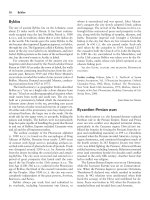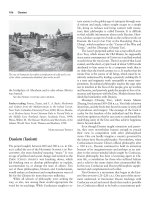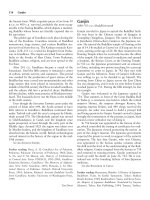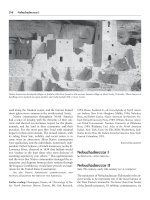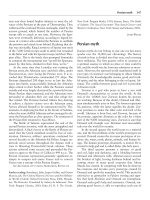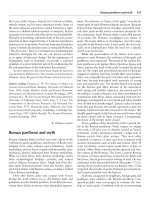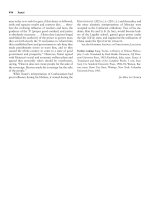Encyclopedia of world history (facts on file library of world history) 7 volume set ( PDFDrive ) 3236
Bạn đang xem bản rút gọn của tài liệu. Xem và tải ngay bản đầy đủ của tài liệu tại đây (128.67 KB, 1 trang )
416
Teresa of Calcutta, Mother
Mother Teresa’s life bore witness to the joy of loving, the dignity of
every human person, and the surpassing worth of faith in God.
difficult financial straits and left her mother as her guide
for character and vocation. Her local Jesuit parish also
contributed strongly to her formation.
At 18, desiring to become a missionary, Gonxha
joined the Institute of the Blessed Virgin Mary (Sisters
of Loretto) in Ireland. There she received the name Sister
Mary Teresa after St. Thérèse of Lisieux. In December
she departed for India, arriving in Calcutta on January 6,
1929. After making her first profession of vows in May
1931, Sister Teresa was assigned to the Loretto Entally
community in Calcutta and taught at St. Mary’s School
for girls. On May 24, 1937, she made her final vows.
From that time on she was called Mother Teresa. She
continued teaching at St. Mary’s and in 1944 became
the school’s principal.
On September 10, 1946, during the train ride from
Calcutta to Darjeeling for her annual retreat, Mother
Teresa said she experienced a divine love for souls, a
force within her that motivated her for the rest of her
life. She felt called to establish a religious community,
the Missionaries of Charity sisters, dedicated to the service of the poorest of the poor. Nearly two years passed
in discernment before Mother Teresa received permission to begin. On August 17, 1948, she dressed for the
first time in a white, blue-bordered sari and left Loretto
to enter the world of the poor. On December 21 she
went for the first time to the slums to find and serve
among “the unwanted, the unloved, the uncared for.”
After some months she was joined by a number of her
former students.
On October 7, 1950, the new congregation of the
Missionaries of Charity was officially established in Calcutta. By the early 1960s Mother Teresa began to send
her sisters to other parts of India. In February 1965 she
opened a house in Venezuela. It was soon followed by
foundations in Rome and Tanzania and, eventually, on
every continent. During the years of rapid growth the
world began to focus its attention on Mother Teresa.
Numerous awards honored her work. An increasingly
interested media began to follow her activities. Her
humble stature and effective work also attracted the
attention of many intellectuals and celebrities, many of
whom were touched by her spirit.
Mother Teresa’s life bore witness to the joy of loving, the dignity of every human person, the value of little
things done faithfully, and the surpassing worth of faith
in God. But only after her death was it revealed that her
interior life was marked by a painful experience of feeling
separated from God. At times she grappled with profound
doubts and fears about her work and her faith. Despite
increasingly severe health problems, she continued to
govern her society of sisters and respond to the needs of
the poor and the church. By 1997 Mother Teresa’s sisters
numbered nearly 4,000 and were established in 610 foundations in 123 countries. In March 1997 she handed on
her duties as superior to a newly elected successor.
On September 3, 1997, Mother Teresa died. She was
given a state funeral by the government of India, and her
body was buried in the headquarters of her order. Her
tomb quickly became a place of pilgrimage. Less than
two years later, in view of Mother Teresa’s widespread
reputation of holiness and the miracles reported as connected to her intercession, Pope John Paul II permitted
official discussions about her canonization as a saint
to begin. On October 19, 2003, he beatified Mother
Teresa before a crowd of at least 300,000.
Further reading: Egan, Eileen. Such a Vision of the Street:
Mother Teresa—The Spirit and the Work. New York: Image
Book (Doubleday), 1986; Muggeridge, Malcolm. Something

